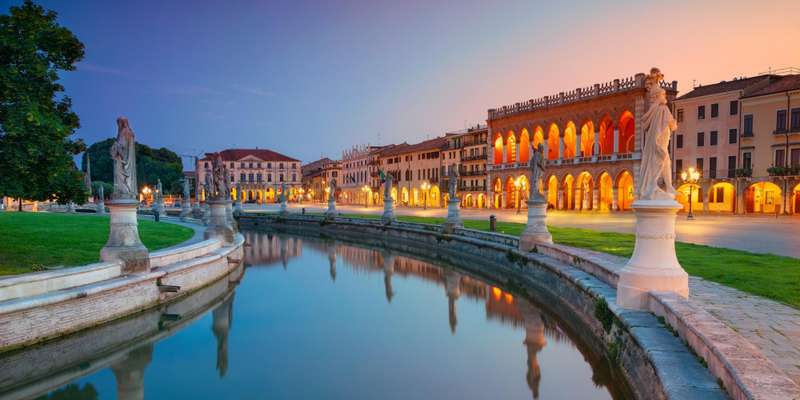- Home
- Useful Tips
- Accessible attractions in Padua...
Exploring historic cities like Padua presents unique challenges for wheelchair users, where 16th-century cobblestones meet modern accessibility needs. Over 75% of disabled travelers report abandoning itineraries due to inadequate accessibility research, wasting precious vacation time on logistical hurdles rather than enjoying Italy's artistic treasures. The frustration of arriving at a UNESCO site only to find stepped entrances or inaccessible restrooms can overshadow the joy of discovery. Padua's compact city center offers remarkable Renaissance art and botanical wonders, but navigating its medieval layout requires insider knowledge of which attractions have implemented thoughtful accessibility adaptations. This guide shares practical insights to help you experience Giotto's Scrovegni Chapel frescoes, the ancient University, and other gems without compromising comfort or independence.


Navigating Padua's historic center with mobility needs
Padua's pedestrianized centro storico presents a mix of smooth flagstone pathways and challenging cobbled zones, requiring strategic route planning. The area between Piazza delle Erbe and Prato della Valle features relatively even surfaces, with tactile guidance paths aiding visually impaired visitors. Key pedestrian corridors like Via Roma and Via VIII Febbraio have gradual inclines under 5%, though some side streets near the University retain uneven medieval paving. Local authorities provide an updated accessibility map at tourist offices, highlighting routes with dropped curbs and avoiding construction zones. For longer distances, the city's wheelchair-accessible taxis (available by advance booking) solve the challenge of reaching peripheral sites like the Basilica of St. Anthony. Morning visits prove easiest, when delivery vehicles aren't obstructing ramps and crowds are thinner for maneuvering.
Top wheelchair-friendly cultural attractions with access details
Padua's crown jewels have made significant accessibility upgrades without compromising historic integrity. The Scrovegni Chapel offers reserved parking and a dedicated elevator for wheelchair users, with touchscreen panels bringing Giotto's ceiling frescoes to eye level. The 16th-century Botanical Garden, a UNESCO site, features raised herb beds and glasshouse ramps among its 600-year-old plane trees. Don't miss the Palazzo della Ragione's new lift accessing the first-floor hall, where multimedia displays compensate for the staircase-only upper levels. The University's Anatomy Theater provides alternative video tours of its steep 1594 lecture stands. For seamless experiences, contact sites 48 hours ahead – the Baptistery keeps a portable ramp stored for wheelchair access to its magnificent 14th-century fresco cycle.
Accessible dining and rest stops across the city
Finding wheelchair-friendly cafes near major attractions prevents fatigue during Padua explorations. The Eremitani Museum cafe offers spacious seating with roll-under tables and accessible restrooms, ideal after viewing Mantegna's works. For traditional Paduan cuisine, Osteria l'Anfora near the University has removed architectural barriers while preserving its 16th-century wine cellar ambiance. Coffee breaks are easiest at Piazza dei Signori establishments like Caffè Pedrocchi, where ground-floor service accommodates mobility devices. Public restrooms with adult changing facilities are available at the train station and adjacent to Prato della Valle's southern entrance. Many trattorias in the Santa Croce district provide temporary ramps upon request – afternoon reservations ensure staff have time to configure seating.
Accessibility resources and local support services
Padua's progressive accessibility initiatives include several free services for disabled visitors. The municipal tourist office loans out portable wheelchair ramps with a refundable deposit, particularly useful for smaller shops and B&Bs. From April to October, the 'Padova per Tutti' program offers guided tours with sign language interpreters and tactile models of major artworks. Discounted mobility equipment rentals are available through authorized providers, including all-terrain wheelchairs capable of handling the Basilica's courtyard gravel paths. For independent exploration, the city's bike-sharing system includes adapted cycles at key stations. Local disability organizations provide real-time updates on elevator outages at major sites through their WhatsApp channel, helping you adjust itineraries dynamically.



